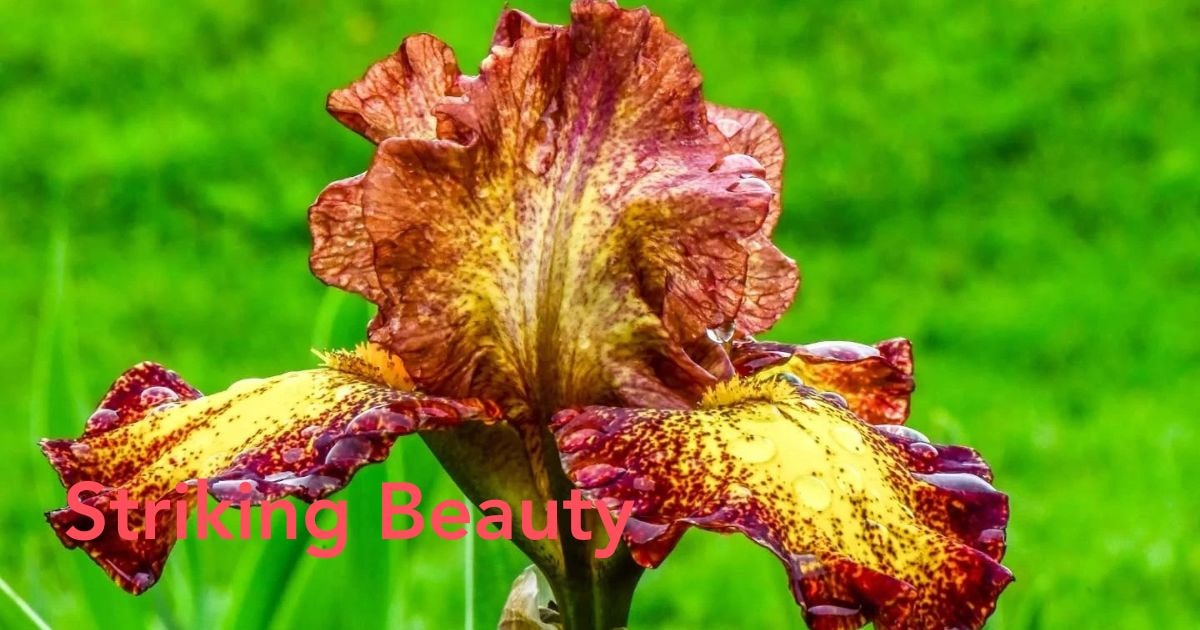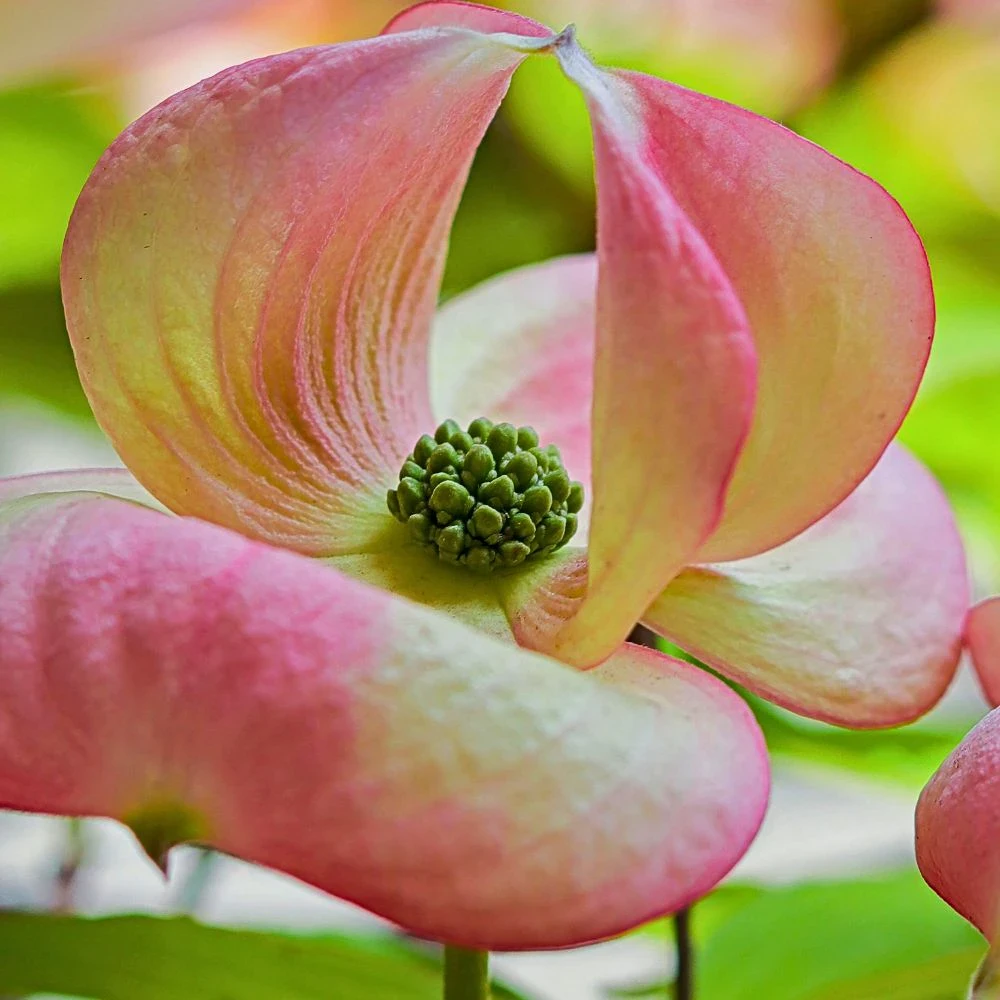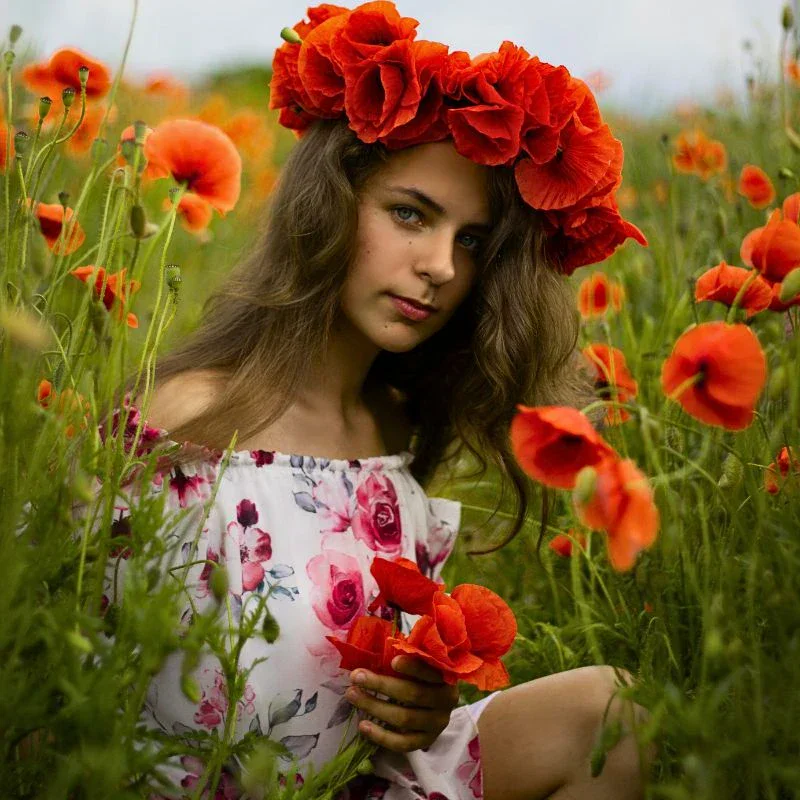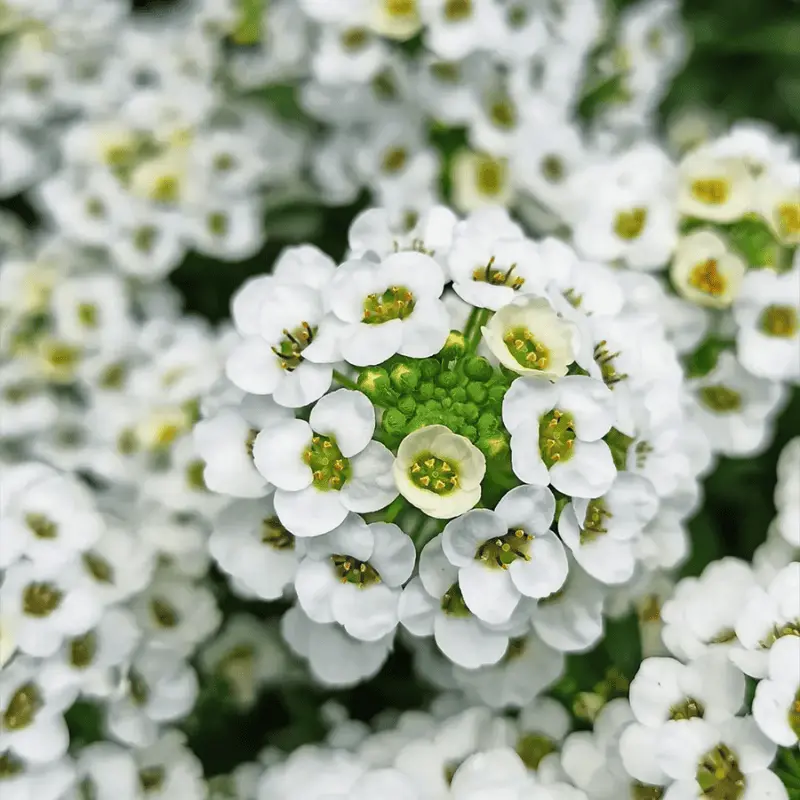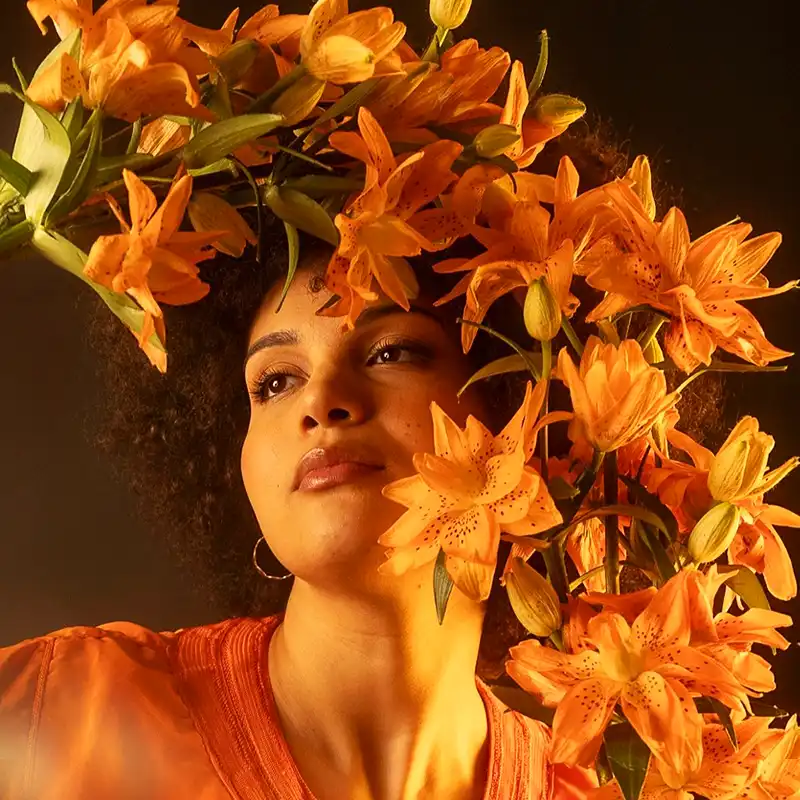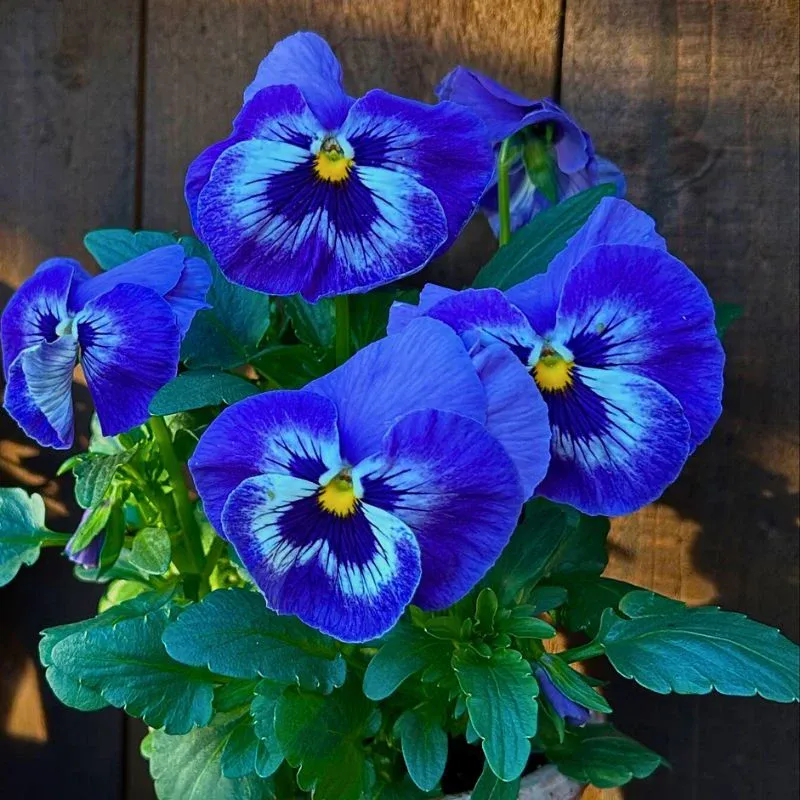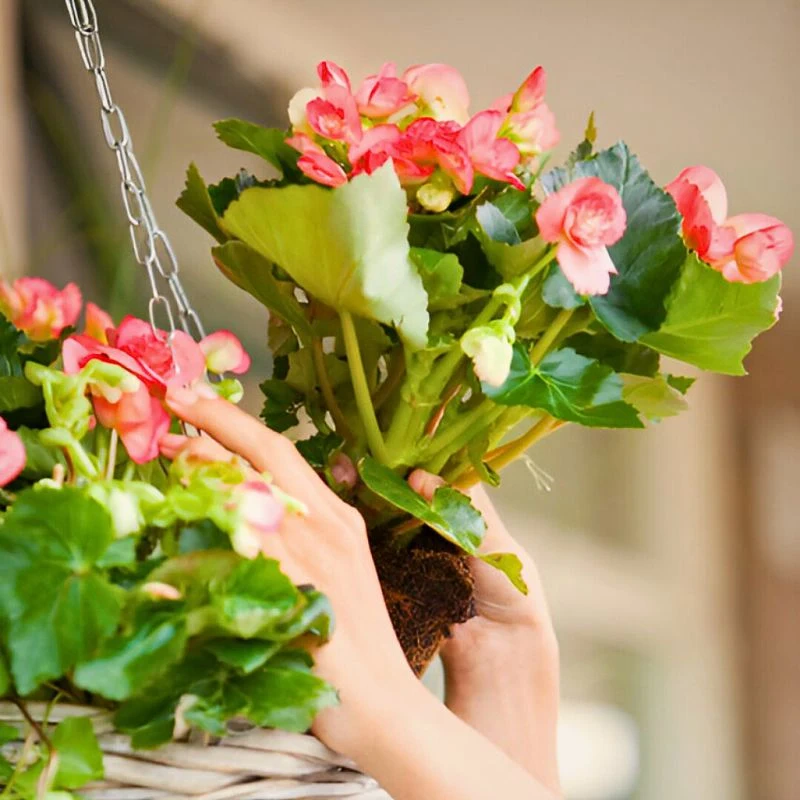From its divine origins in Greek mythology to its presence in modern bouquets, the iconic Iris flower is loved not only for its striking beauty but also for the deep symbolism and rich history it carries. Named after the goddess Iris, the Greek goddess of the rainbow, this blossom was fabled to bridge heaven and earth as a messenger of the gods.
With blooms that span a rainbow of vibrant colors—from deep blue and royal purple Irises to sunny yellow flowers and pure white Irises—the flower has elegant lilac varieties and an unmistakable, majestic flair. Beyond its visual allure, the Iris has long stood as a symbol of valor, hope, and wisdom, even representing royalty and divine promise across different cultures.
Let's explore Iris flower meaning, symbolism, and the fascinating stories behind it, journeying with us through Iris flower history insights from Ancient Egypt and Greece to modern times, discover how different Iris colors convey different meanings, and learn about the Iris’ role in art, mythology, gardening, and more. By the end, you’ll understand why the Iris flower is more than just a pretty bloom—it’s a living emblem of faith, courage, hope, and everlasting inspiration.

Botanical Foundations of the Iris Flower
The genus Iris encompasses more than 300 species—an astonishing array grouped into three celebrated subgenera: bearded, beardless, and crested Irises. Breeders add fresh hybrids to this rainbow each year, expanding the garden palette and the marketplace. In botanical Latin, staples such as Iris germanica and Iris ensata stand shoulder‑to‑shoulder with florist favorites like the graceful Dutch Iris and the cold‑hardy Siberian Iris, demonstrating how scientific nomenclature mingles effortlessly with common trade names.
Morphologically, every Iris follows a recognizable blueprint: sword‑shaped leaves rise from rhizomes—or bulbs in a few species—and support a six‑petaled bloom whose upright 'standards' contrast with the drooping 'falls', or lower petals. These falls are often etched with elegant lilac veining and suffused with a woody and powdery scent that has captivated perfumers for centuries. At the same time, conspicuous nectar guides grant the Iris notable ability to attract butterflies and other pollinators.
Geographically, Irises demonstrate remarkable adaptability. Mediterranean hills host drought‑tolerant bearded cultivars; Central‑Asian steppes nurture species bred for endurance; and North‑American wetlands cradle beardless Louisiana Irises that seem to sing of abundance. This wide distribution shapes the flower color folklore—desert yellows evoke resilience, marsh blues whisper prosperity—illustrating how place informs symbolism.
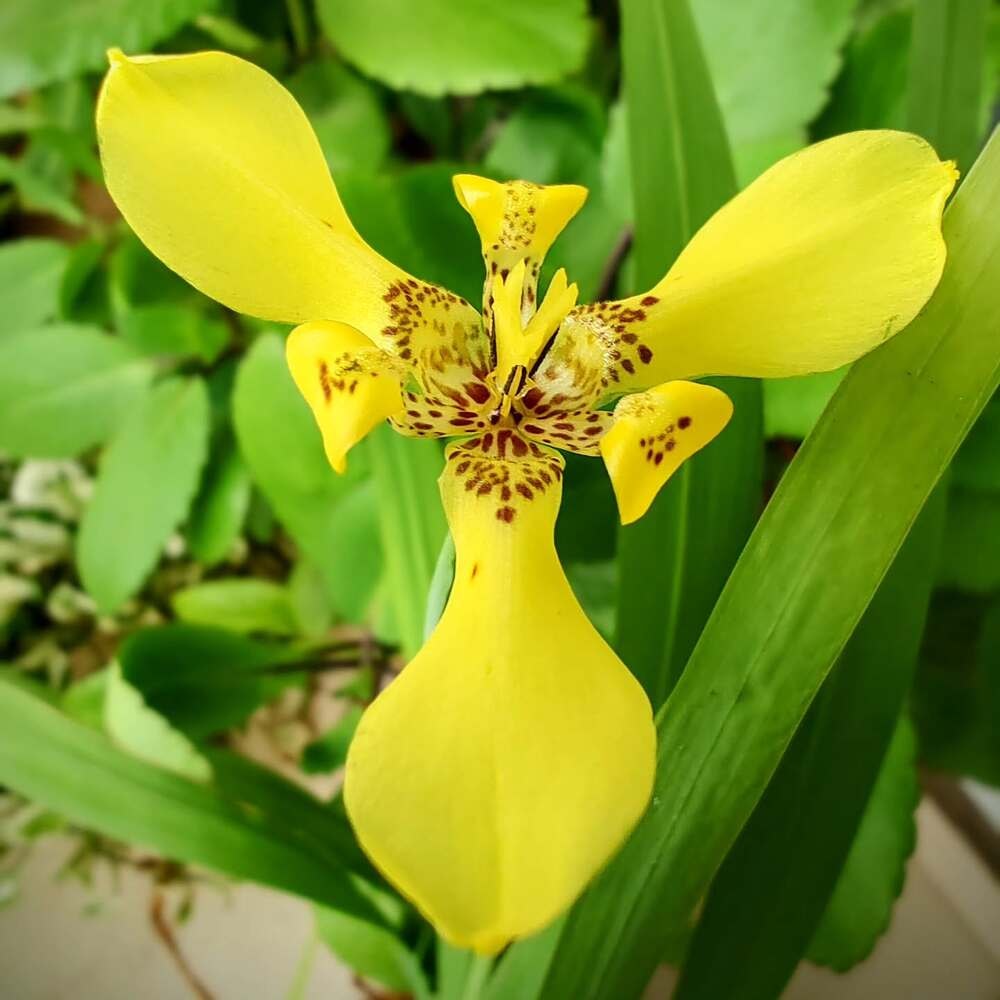
Finally, thanks to their tough constitution, most Irises burst into bloom from spring to early summer, thriving in direct sunlight yet weathering seasonal rains easily, thus earning their status as steadfast, living heralds of the changing year.
Etymology & Mythic Origins of the Iris
From ancient “Ἶρις” to today’s Iris, the blossom inherits a name that literally means rainbow—a nod to the sky‑borne courier who stitched heaven to earth. For millennia, that etymology has colored every legend, palette, and prayer connected with the flower.
Within Greek mythology, Greek mythology‑Iris tales place Iris beside Zeus, arching across clouds to deliver divine decrees. This narrative birthed the phrase messenger of the gods, and it cemented this bloom’s reputation for eloquent speech. By the Classical era, graves bore purple Irises so Iris could guide souls on their final ascent—proof that the Iris flower meaning, symbolism is rooted in farewell and hope.
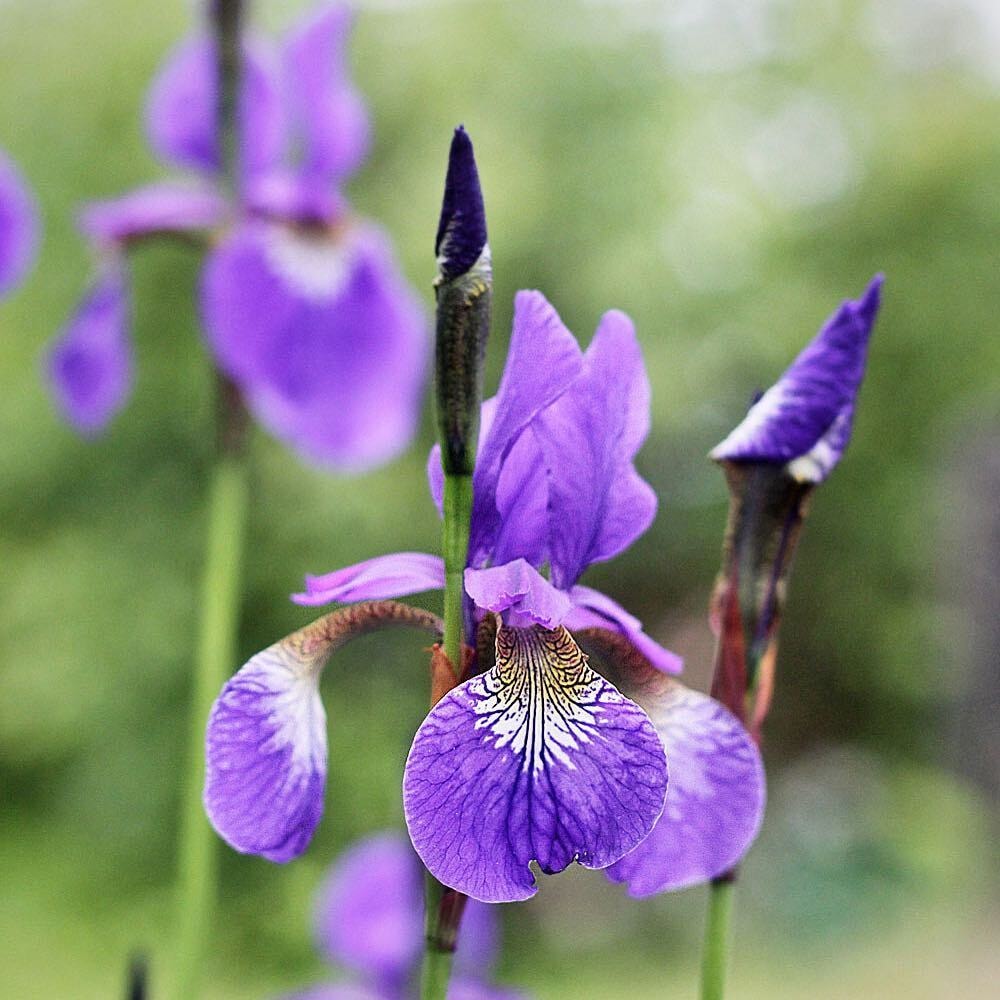
Latin poets praised blue Irises as omens of valor, adapting Iris’s arc into metaphors for Caesar’s conquests. Early Christian writers echoed the rainbow in visions of covenant; iridescent petals framed sermons about heavenly bridges. In monasteries, texts described Irises symbolize courage, bravery, aligning saints’ quests with the flower’s steadfast stance.
Scriptoria re‑penned Greek “Ἶρις” into Iris in glossaries and herbals, creating the term radix iridis for dried rhizome. That lexical shift let physicians record joint pain, migraines, and toothache treatments, giving us priceless Iris flower history insights into medieval medicine.
Historic Symbolism of Iris Flowers Across Civilisations
From pharaonic reliefs to samurai scrolls, Irises carried different meanings while sustaining a through‑line of courage, renewal, and protection.
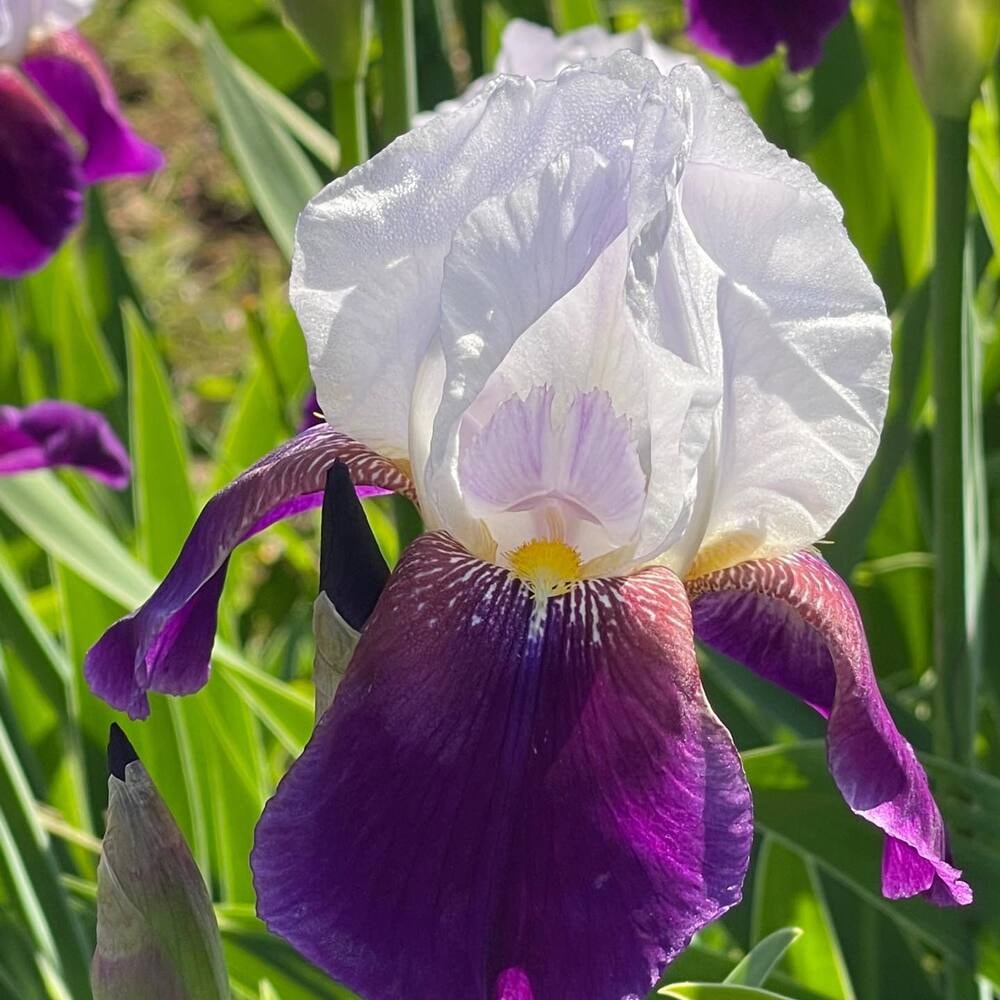
- Resurrection on the Nile: Karnak’s murals show Ancient Egyptians offering blue‑gold blooms at Osiris’s altars. When King Thutmose III conquered Syria, legend says he ferried Iris bulbs home, using them as emblems of rebirth during Nile inundations. A field of yellow Irises swaying by the river became a living hymn to eternity.
- Eloquence of Greece & Rome: Athenian orators wore purple Irises in wreaths as talismans of rhetoric; legion standards bore blue Iris flower emblems for safe passage. Thus, the Iris typically symbolizes royalty and persuasive authority in Classical lore.
- Crest of European Thrones: The French monarchy adopted Irises by stylising Iris pseudacorus into the fleur‑de‑lis. Crusaders under Louis VII marched behind banners bearing that striking dark purple color, asserting both divine favor and martial might. Marian icons later paired the fleur‑de‑lis with the sword‑pierced heart, weaving humility into heraldry.
- Samurai Ward Against Evil: In Edo Japan, moat grown crested Irises mirrored katana blades. Boys’ Day saw warriors sip Iris‑infused sake to sharpen focus, believing Irises symbolize stability, security, and cut down malevolent spirits.
- Roots & Remedies: Apothecaries across Europe prized Iris root for liver tonics and cough syrups; Persians steeped petals for digestion, joint pain, and migraines. Though modern data is mixed, Irises have medicinal uses documented in nearly every folk pharmacopoeia.
Iris Flower Meaning and Symbolism in Floriography
Throughout history, Irises have conveyed profound messages through their colors and presence. In the Victorian language of flowers - floriography, the Iris flower symbolizes faith, courage, valor, hope, and optimism. (Indeed, many add “wisdom” to that list of virtues, given the Iris’s association with kings and gods.) An Iris in a bouquet could send unspoken signals of admiration or encouragement. Even outside Victorian England, the Iris has been a symbol of sentiments ranging from hope and friendship to honor and mourning, depending on the context and color.
Iris Flower Color Meanings
The meaning of an Iris bloom often hinges on its hue. Different colored Irises carry different meanings, adding layers of nuance to their beauty. Here is a look at what various Iris flower colors traditionally represent:
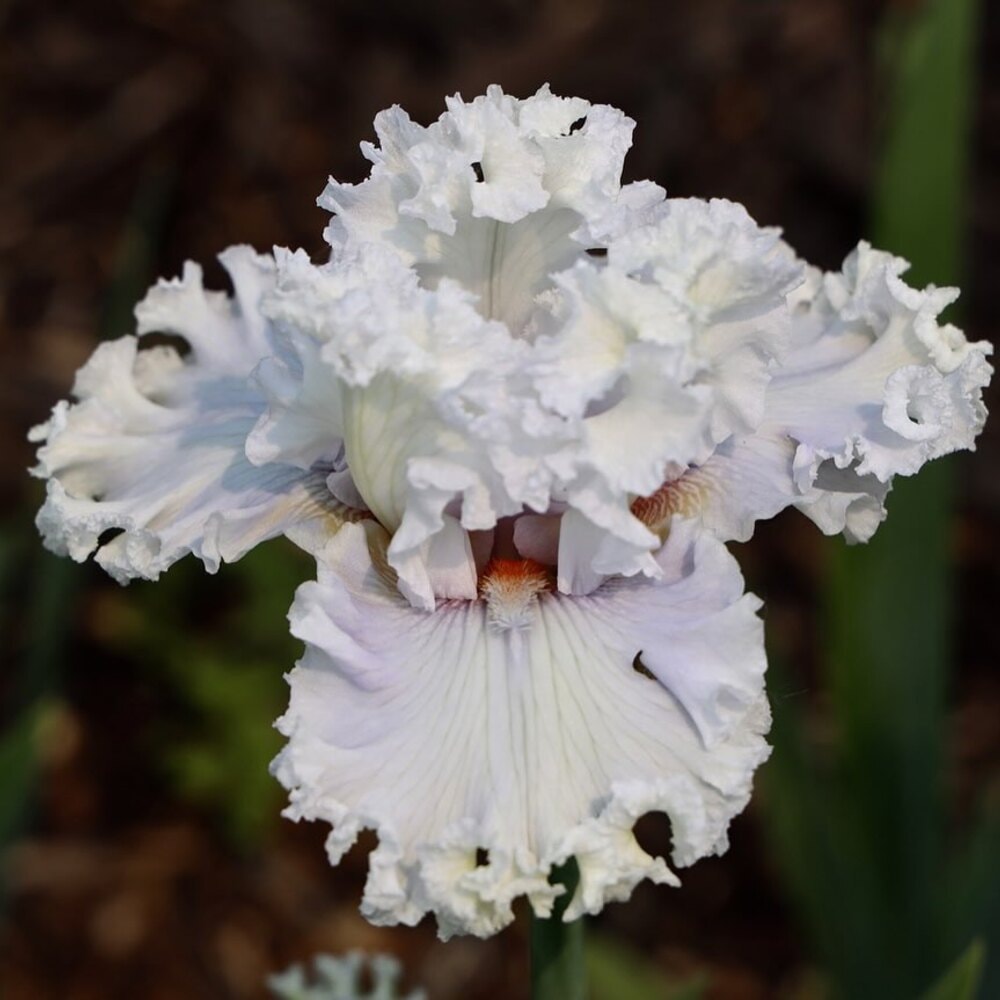
- Purple Irises: Purple Irises have long been associated with royalty and wisdom. The purple Iris typically symbolizes royalty, respect, and admiration. Purple Irises are often used in ceremonies and bouquets to convey dignity and high esteem.
- Blue Irises: Blue Irises are often linked to hope, faith, and serenity. A blue Iris flower is commonly used to send a message of faith or comfort during difficult times. Bright blue Irises evoking the color of the sky can symbolize hope for a brighter future and the promise of peace.
- Yellow Irises: Symbolize passion, pride, and positive energy. While yellow flowers in general can signify friendship, the yellow Iris flower symbolizes intense emotion. In Victorian floriography, yellow Irises imply passion—their sunny hue carrying an undercurrent of bold, sometimes jealous love. Today, yellow Irises still bring a message of enthusiasm and encouragement.
- White Irises: Represent purity, innocence, and spiritual renewal. White Irises are often seen at weddings (for blessings and purity) and funerals (for hope and heavenward guidance). A bouquet of white Irises can express reverence, remembrance, or send wishes of healing and peace.
- Pink Irises: Convey affection, kindness, and gentle friendship. A pink Iris flower symbolizes sweet thoughts and admiration. Pink Irises (especially those with pink petals, ruffled edges) are perfect for expressing warm feelings, whether romantic or platonic. Many pink Iris varieties have soft pink petals ruffled elegantly along the edges, enhancing their delicate appearance.
- Orange Irises: Stand for courage, pride, and youthful energy. With their fiery tones, orange Irises symbolize courage and enthusiasm. They are a fitting gift to cheer someone on, celebrate a personal victory, or wish someone strength and vitality.
- Brown and Exotic Irises: Brown is an unusual colour for Irises, giving these blooms a unique, earthy charm. Such unusual blooms symbolize elegance, mystery in floral symbolism. The natural color brown Irises symbolize warmth, stability, and reliability – indeed, brown Irises symbolize stability and security. Though rare, their presence can convey deep appreciation for someone’s steady support or celebrate the comfort of a long-lasting bond.
Iris as Emblem: Nations, Regions, and Brands
Few emblems carry the visual punch of France’s fleur‑de‑lis, yet scholars still spar over its floral identity. Heralds long called it a lily, but botanists observe that the stylised, three‑petalled badge mirrors the flared falls and pronounced midrib of Iris pseudacorus, a yellow marsh species rather than Lilium candidum.
That botanical nuance deepens the emblem’s narrative: the Iris flower, not the lily, may have burnished Capetian crowns, linking royal authority to wetland resilience. Whether carved above cathedral doors or stitched on regimental flags, this iconic Iris silhouette reminds us that medieval heraldry often disguised precise plant lore beneath stylised geometry.

In the modern marketplace, an iconic Iris signals cultivated ambition. Parisian perfume houses emboss bottle caps with a sleek bloom whose purple Irises connote prestige and visionary flair, while hospitality chains such as Athens‑based “Hotel Iris” adopt the motif to suggest grace balanced by strength.
Even the New Orleans Pelicans basketball franchise works a fleur‑de‑lis‑inspired crest into team jerseys, blending regional history with competitive edge. Designers gravitate toward the Iris because its palette—royal purples, tranquil blue Irises, and sunlit golds—maps neatly onto consumer psychology, letting color theory and Iris flower meaning reinforce a brand’s promise of excellence.
State and Provincial Blossoms—Civic Identity in Bloom
Governments, too, enlist the bloom to express place and pride. Tennessee designated purple Irises its state flower in 1933, praising the plant’s ability to thrive in direct sunlight and clay‑rich soils just as its citizens persevere through humid summers. Québec followed suit in 1999, elevating the blue‑flag Iris to champion wetland conservation and francophone heritage.
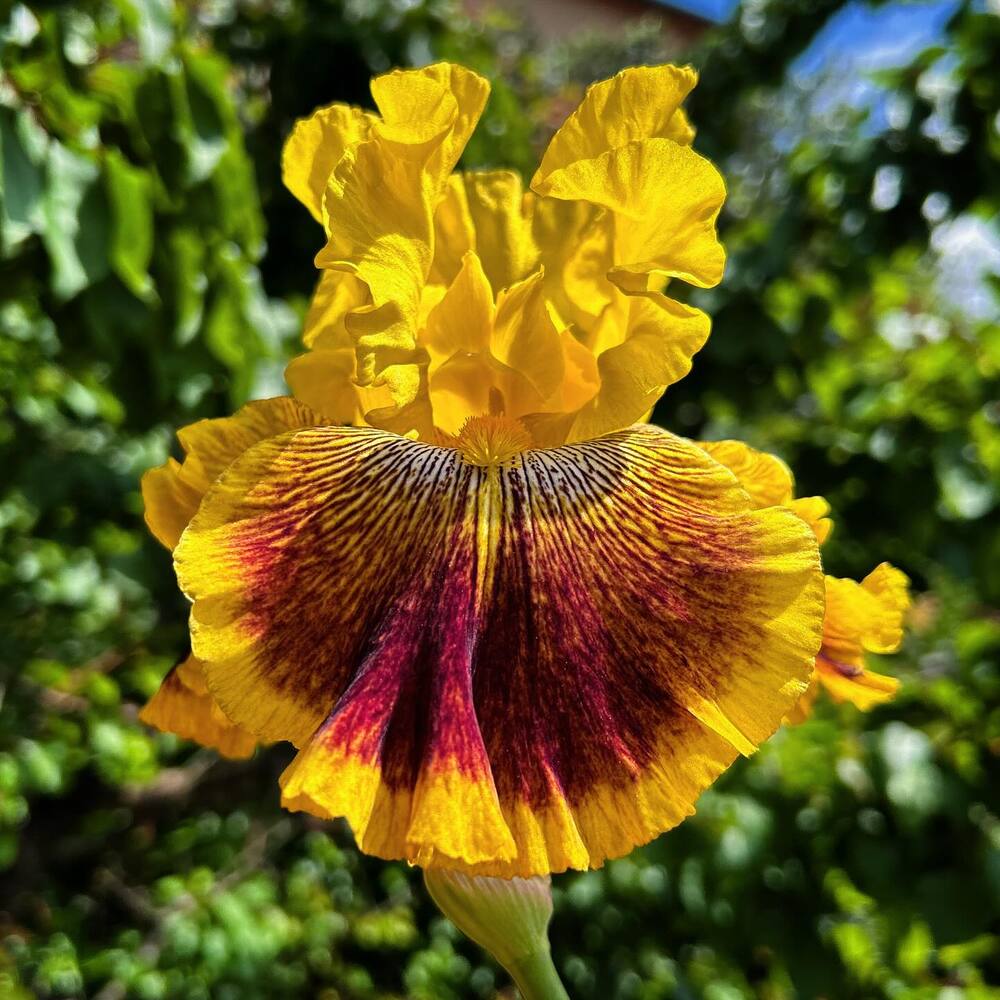
Other jurisdictions—Manitoba’s wild Iris, Croatia’s Adriatic blue Iris, and Buenos Aires Province’s Iris germanica—echo the pattern, proving the Iris flower is loved as both an ecological sentinel and cultural shorthand. Each adoption turns petal into policy, transforming a garden staple into a living flag whose colors rally communal pride.
Irises in Art, Literature, and Religion
Van Gogh’s swirling Irises convert paint into soul‑exposed color, where powdery scent divine origins seem to waft from canvas. His brushwork magnifies the boundary between vibrancy and decay, honoring the bloom’s transient beauty. Across the globe, Ogata Kōrin’s Kakitsubata‑zu screens abstract marsh‑grown Japanese Irises into rivers of cobalt, marrying nature to the Tale of Genji. Medieval manuscripts painted white Irises at Mary’s feet, the blade‑like leaves prefiguring the sorrowful sword: an emblem of piercing grief and heavenly hope.
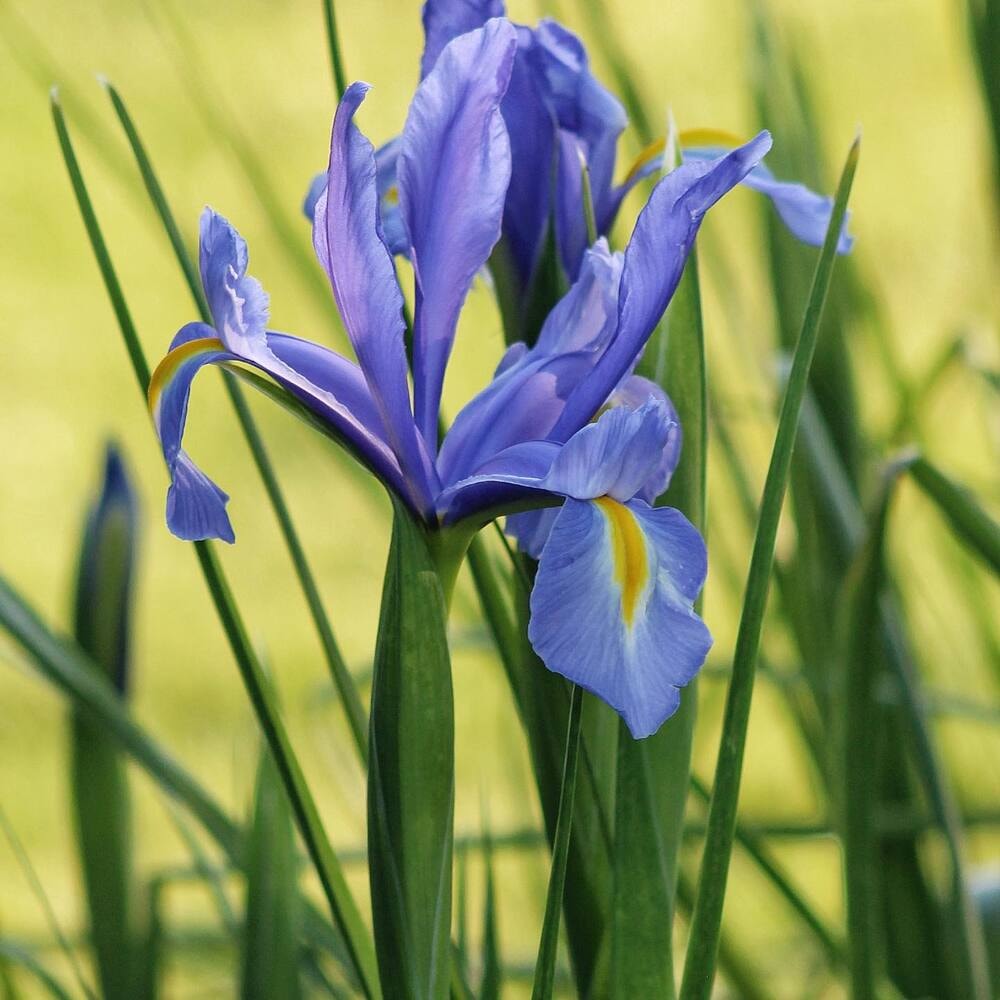
Energetic Alignments & Chromatic Remedies
Practitioners of feng shui place blue Irises in the Water gua to accelerate career momentum, while clustering yellow flowers in the Fame sector to ignite bold recognition. Chromotherapists tout violet wavelengths for clarity, standing behind the idea that a room hung with purple Irises can sharpen intuition. In holistic circles, Irises act as living prisms, refracting energy wherever petals unfurl.
Dreams, Zodiac Echoes, and Mystic Messages
Dream lore holds that receiving white Irises forecasts enlightenment, whereas planting rhizomes foretells fresh projects. February birthdays debate between violet and Iris: In colder climes, the Iris flower represents that month’s potential thaw, while elsewhere, violet claims the title. Astrologers tether the Iris to Venus (artistry) and Jupiter (wisdom), labeling them guardians of creative expansion. Thus, the blossom inhabits both night‑mind and star‑chart, a chromatic oracle that counsels transformation.
Emotional, Psychological, and Spiritual Connotations of the Iris Flower
From hospice gardens to executive boardrooms, the Iris flower works as an ever‑shifting prism of meaning. In spaces of grief, rows of white Irises soften sorrow, each stem hinting at sunrise after loss and offering a gentle bridge of hope between farewell and renewal. In contrast, the glint of yellow Irises on a lectern quietly fortifies decision‑makers; their golden tones evoke the classic quartet of valor, hope, and wisdom, lending leaders the confidence to choose boldly without arrogance.
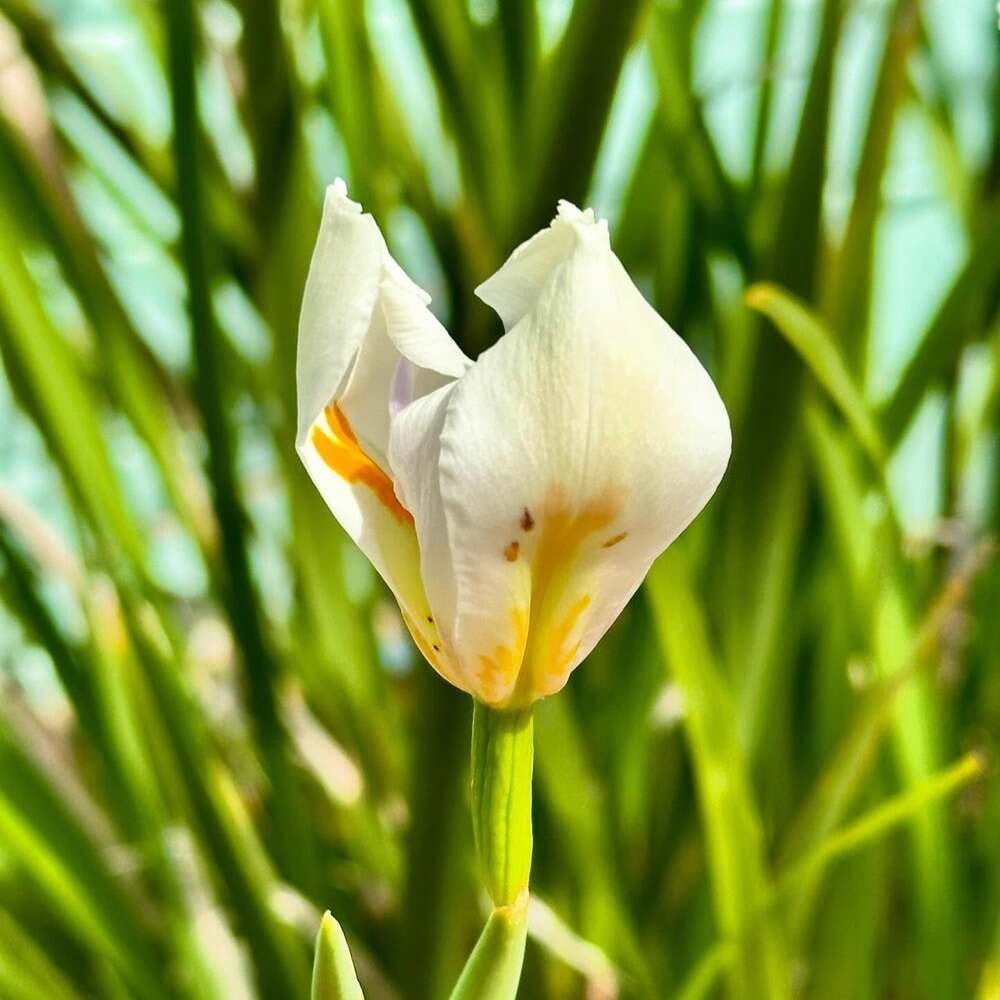
And when teams gather to champion inclusion, a kaleidoscope of Irises becomes a living rainbow of dialogue, its concentric petal‑wheel modeling how diverse voices can overlap, reflect, and ultimately harmonize. Together, these settings reveal the Iris as both therapist and teacher—an elegant floral cipher that translates complex emotions into color and form.
Use of Iris Flowers in Floral Designs and as Gifts
In the hands of modern designers, the Iris proves as practical as it is poetic. Landscape architects weave broad Iris grids along drainage swales, using hardy rhizomes to filter runoff while brown Irises symbolize stability in sustainable layouts - perfumers; meanwhile, age bearded‑Iris rhizomes into lush orris butter, the powdery base of legendary fragrances.
In the cut‑flower trade, florists prize the Iris’s versatility: sent at the tight “pencil” stage, stems are recut under water, treated with flower food, and chilled overnight to extend vase life beyond a week—allowing striking spring flowers to anchor Easter altars, Mother’s Day bouquets, and May‑Day markets. When it comes to gift‑giving, color does the talking.
Blue Irises tied with silver ribbon salute 25th anniversaries and promises kept; yellow Irises ignite house‑warmings with passionate optimism; white Irises temper funeral sprays with resurrection hope; and purple Irises elevate academic hoods or promotion parties with a regal air. Numerology adds another layer—seven stems for prosperity, nine for completion—reminding us that an Iris arrangement is never merely decorative; it is encoded with blessings, milestones, and silent vows of encouragement.
Popular Types of Irises
The Iris genus encompasses over 300 species, exhibiting a stunning variety of forms. However, most Irises share a few traits: a fan of sword-like leaves and a bloom with six petals in a unique structure – three upright “standards” and three lower “falls” (often bearing markings or a beard). Gardeners and botanists classify types of Irises into several groups based on these traits. Here are a few of the best-known categories:

Bearded Irises
Bearded Irises are the quintessential Irises found in many gardens. They get their name from the fuzzy “beard” of hairs on their lower petals (falls). Bearded Irises are hardy perennials with thick, fleshy rhizomes (root structures) that often become woody with age.
They bloom in mid- to late spring and come in a rainbow of colors – blue, yellow, pink, peach, deep purple, white, and everything in between. Their large, ruffled blooms and sweet, sometimes woody and powdery scent make them a favorite among Iris enthusiasts. Bearded Iris varieties can range from delicate pastels with soft pink petals and ruffled edges to bold bicolors with dramatic contrasts.
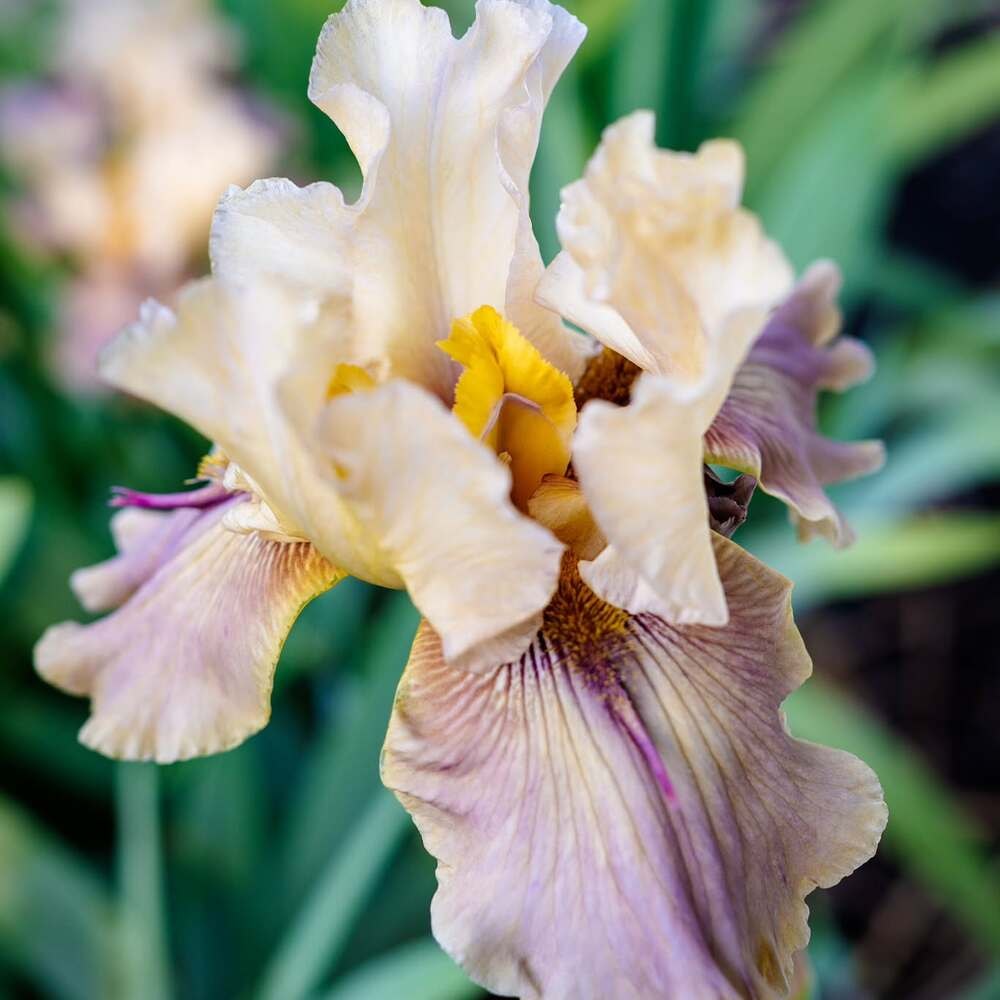
Crested Irises
Crested Irises take a different approach to flower design. Instead of a fluffy beard, these Irises have a raised ridge or “crest” on their falls. They tend to be smaller in stature, often spreading via rhizomes to form charming groundcover clumps in woodlands or shaded gardens.
Crested Irises — like the petite dwarf crested Iris (Iris cristata) — show off beautifully patterned flowers despite their diminutive size. Their blooms can be blue, purple, or even yellow, usually with intricate markings and a central crest. Because of their size and habitat, crested Irises are perfect for rock gardens or naturalizing under trees.
Dutch Irises
The Dutch Iris is a popular bulbous Iris cultivated for cut flowers. Dutch Irises have slender, orchid-like blooms with silky petals. Many feature purple or blue standards and yellow-blazed falls, creating a striking two-tone effect. They bloom in late spring (slightly later than bearded Irises) and are prized for their elegance.
Florists often send Irises of this type in spring bouquets, and they are common in a variety of floral arrangements thanks to their graceful form. In the garden, Dutch Irises prefer direct sunlight and well-drained soil. Their bright colors and upright form also give them the ability to attract butterflies and bees.
Other notable Iris groups include the water-loving Japanese Irises and the tough Siberian Irises, both of which are beardless types known for their own rich colors and landscape value. Together, all these varieties showcase the incredible diversity of the Iris family.
How to Care for Iris Flowers
Irises are hardy, reliable perennials, and with proper care, they will reward you with abundant blooms each year. These iconic spring flowers generally bloom from spring to early summer and then go dormant, storing energy for the next season. Here are some tips to keep your Irises thriving:
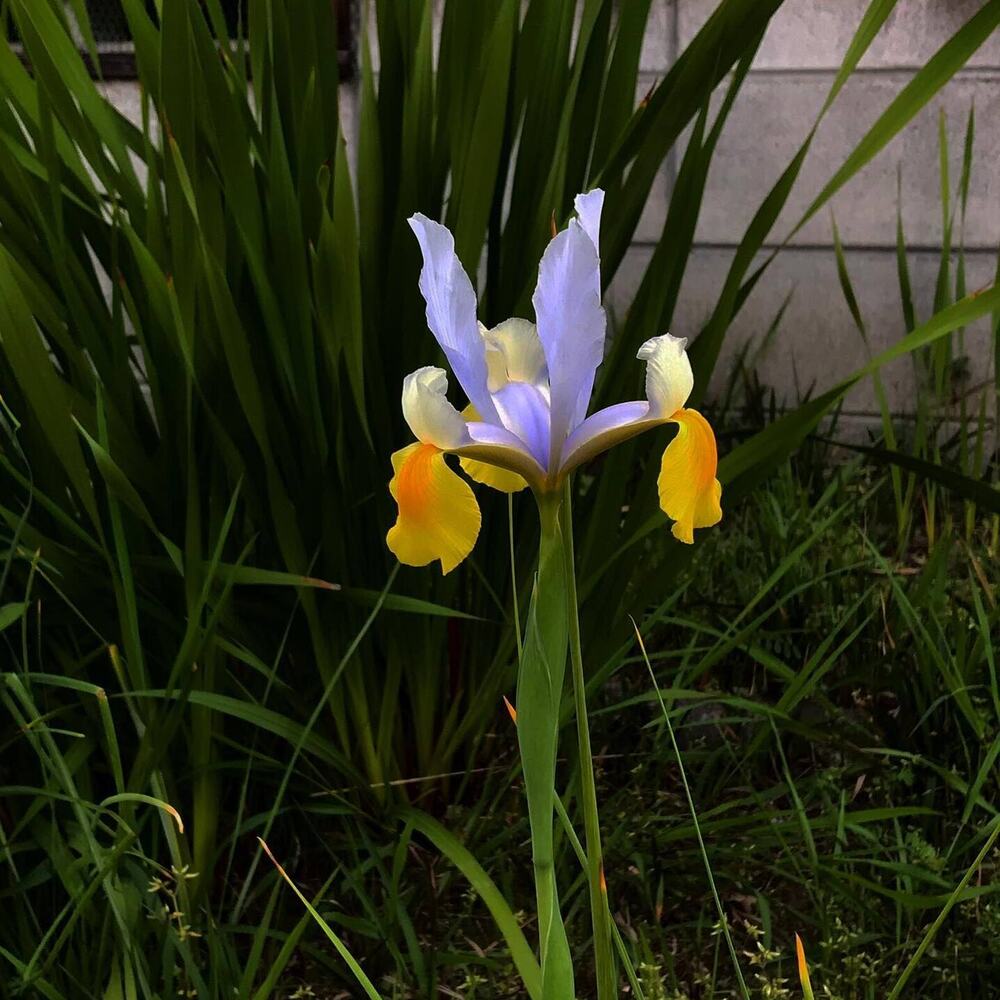
- Sunlight and Heat: Most Irises prefer lots of sun. Plant them in a spot that gets at least 6–8 hours of direct light. (Many bearded and Dutch Irises absolutely love full sun.) Do keep an eye on extreme conditions – direct sunlight, intense heat can scorch the flowers or leaves if the soil dries out. In very hot climates, ensure they have sufficient water or a bit of afternoon shade.
- Soil and Water: Good drainage is key to Iris health. Plant rhizomatous Irises in loose, well-draining soil with the top of the rhizome peeking above the surface to prevent rot. Bulbous Irises (like Dutch Iris) should also be in well-drained soil to avoid mold or rot. Water your Irises regularly during the growing season, but avoid waterlogging. Once established, most Irises are quite drought-tolerant and only need occasional watering.
- Feeding and Maintenance: Irises appreciate a light fertilizer in early spring, but avoid heavy nitrogen feeds, which can lead to rot. After flowering, remove spent blooms (deadhead) to direct energy back to the plant. Every few years, dig up and divide crowded Iris clumps. This prevents overcrowding and keeps them blooming vigorously. Division is best done in late summer for bearded Irises – trim the leaves into a fan shape and replant the healthy rhizome sections.
- Pest Control: Irises are relatively pest-resistant, but watch for Iris borers (in some regions) that can chew through leaves into rhizomes. Remove any dead foliage in fall to discourage borers from overwintering. Also, be on the lookout for slugs or snails on young Iris shoots and use appropriate remedies if holes appear in the leaves.
By following these guidelines, you’ll find that caring for Irises is quite straightforward. With their resilience and minimal demands, Irises will continue to grace your garden (and vases) year after year with minimal fuss.
The Perennial Voice of the Rainbow
Irises continue to be cherished ceremonial and garden plants around the world. They are the emblem of Brussels (the wild yellow Iris) and of French kings (the fleur-de-lis), symbolizing regional pride and history. Many people still send Irises as gifts to convey hope or admiration, and florists include them in a variety of floral arrangements for spring events. As one of nature’s most colorful and meaningful blooms, the Iris flower is loved across cultures – a flower that carries with it a rainbow of stories, from the Greek mythology-Iris legend of the rainbow messenger, to its role in art and healing.
In conclusion, the Iris flower remains a captivating presence in human life. Its vivid colors and graceful form delight the eye, while its layered meanings touch the soul. Whether admired in a painting, tended in a garden, or given as a heartfelt gift, the Iris flower stands as a timeless symbol of faith, hope, courage, and the profound beauty that bridges heaven and earth, truly encapsulating Iris flower meaning at its finest.
Featured image by xiphionplants. header image by pinaki.sarkar5.

